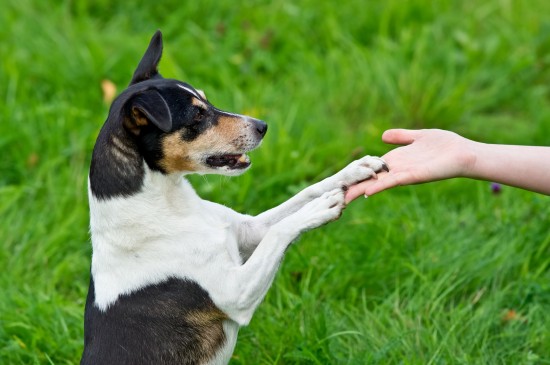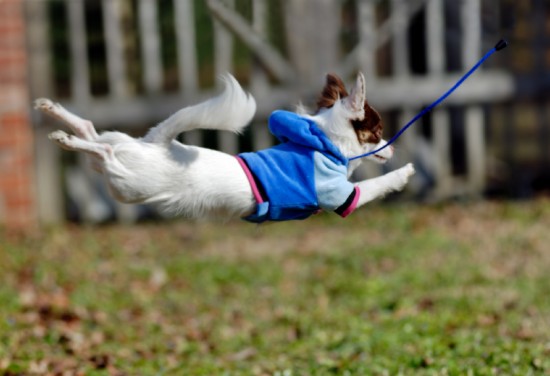At the core of any worthwhile plan to house train a dog is always prevention, and never punishment. But what are the key points that you can control for a complete housetraining plan? Here are some of those.
1) Bring your dog to a veterinary exam and urine/fecal check.
How your puppy is, healthwise, will determine to what extent will the training be successful. Being a new puppy owner, bring your dog to a vet within 48 hours of his getting home from the breeder or shelter. If your puppy flunks the tests and is proven to be less than healthy, enlist the help of the vet in resolving any health condition that may compromise the house training; an example of this condition is bladder infection.
2) Confine the puppy when it cannot be watched.
Crate training or area confinement is an important device for dealing with a puppy or an adolescent dog, when it will be the only one in the house. If introduced appropriately to the pet and used in the intended manner, crate training can actually be seen to be efficient and humane in how it minimizes housetraining accidents, aside from how it safeguards your puppy when you can not keep an eye on it all the time. The crate is not supposed to be used for long stretches of time and, moreover, must not be a means of punishment. Keep your dog on its toes through enough daily activities done together, interactive playtime and exercise. In sum, a crate can be the best means to house train a dog, and moreover, to prepare it for obedience training.
Now here is more advice on how to handle crate training. If this type of training and the other modes of confinement will be used, then it must be together with sufficient exercise and companionship. We cannot downplay here the potential damage to your dog's personality that excessive periods of isolation can cause, manifested in behavioral problems such as destructive behavior, self-mutilation, and excessive barking.
3) If possible, get the dog to eliminate within the walk; do not return until he does.
If your puppy has been kept the whole night inside a crate, bring him outside first thing in the morning. When your puppy does indeed eliminate outdoors, praise him mightily and give him a treat. Bringing your puppy back right into the house before he's fully eliminated is the recipe for a potential housesoiling accident indoors!
The solution to a dog that simply cannot eliminate, is return home, crate the dog, then try leashing him and bringing him outside every 15-30 minutes until he "goes".
4) The dog must be barred from places which are inappropriate areas to eliminate.
Some dogs pick certain areas or types of surfaces to eliminate on, going for rugs, carpeting, etc. You need to keep your puppy off-limits from these delicate or sensitive areas or surfaces. A puppy bolting out of sight may mean that the dog will visit its secret spot to eliminate, so its very important to secure the entrances to rooms and passageways where the dog can furtively take a pee or poo.
5) Get rid of worms and parasites.
Get in touch with your veterinarian if you think your pet is infested with worms, coccidia, fleas, ticks, or other internal or external parasites.

 The Sphynx Cat - A Cat With No Coat
The Sphynx Cat - A Cat With No Coat
 Health Conditions Common To The Border Collie
Health Conditions Common To The Border Collie
 Longevity, Health And Hereditary Conditions Within The Belgian Malinois Dog Breed
Longevity, Health And Hereditary Conditions Within The Belgian Malinois Dog Breed
 Sugar Gliders - What Are They And Do I Want One As A Pet?
Sugar Gliders - What Are They And Do I Want One As A Pet?
 Tips And Tricks For Raising An Obedient Dog
Tips And Tricks For Raising An Obedient Dog
 5 Duck Breeds That Are Great To Keep In The Garden
5 Duck Breeds That Are Great To Keep In The Garden
 The Importance and Styles of Chicken Houses for Chickens
The Importance and Styles of Chicken Houses for Chickens
The Importance and Styles of Chicken Houses for Chickens
The Importance and Styles of Chicken Houses for Chickens
 Fish Breeding And Raising Fish Fry
Fish Breeding And
Fish Breeding And Raising Fish Fry
Fish Breeding And
 Adrenal Disease In Ferrets Explained
Adrenal Disease I
Adrenal Disease In Ferrets Explained
Adrenal Disease I
 Breeding From Your Dog - The First Stages Of Labour
Breeding From You
Breeding From Your Dog - The First Stages Of Labour
Breeding From You
 Dancing With Your Dog - Heelwork To Music
Dancing With Your
Dancing With Your Dog - Heelwork To Music
Dancing With Your